
|   |

|   |
'Unity in Diversity': A unique cultural festival - Manjari Sinha e-mail: manjari@sinha.com Photos: Umang Shah April 7, 2023 Infosys Foundation, Bengaluru, and the Bharatiya Vidya Bhavan (BVB), jointly presented a nine-day Cultural Festival under the theme 'Unity in Diversity' comprising music, dance, drama, film, fine arts, panel discussions, and talks at the BVB auditorium, Chaupati, Mumbai. The inauguration with a welcome address by Jagdish Lakhani, executive secretary of BVB Mumbai, and the inaugural address by the chief guest Purushottam Agrawal, Hindi writer and intellectual, in the presence of K.G. Raghavan, Chairman, BVB Bengaluru, Praveen Kulkarni, Infosys Head, Pune, and a full house, was followed by the hilarious and most sensitively relevant play 'Jis Lahore Nai Dekhya' written by Asghar Wajahat and directed by Dinesh Thakur. A rich fare of multifarious cultural extravaganza drew art lovers for nine consecutive evenings, especially the music and dance shows comprising devotional to film music and classical dances, which attracted sizable audiences. The musical evening based on the Bhakti period literature with medieval saint poets and Sufi music, had Neela Bhagwat rendering the poetry of Meera Bai and Akka Mahadevi and Amarendra Dhyaneshwar singing that of Kabir and Narsi Mehta. Ramkrishna Das dressed as a Baul, the wandering minstrel of West Bengal, presented songs of Chandi Das and Laalon Fakir. His singing Baul songs while playing Ektara, roaming all over the stage, provided a welcome change to the concert-like presentations with accompanying musicians that resumed with Sania Patankar singing the poetry of Tukaram and Mukta Bai. Fareed Hasan and Mehboob Hussain Khan presented the Sufi poetry of Amir Khusro and Bulle Shah before Soma Sen took the audiences to Rabindra Sangeet written and composed by Gurudev Rabindranath Tagore. 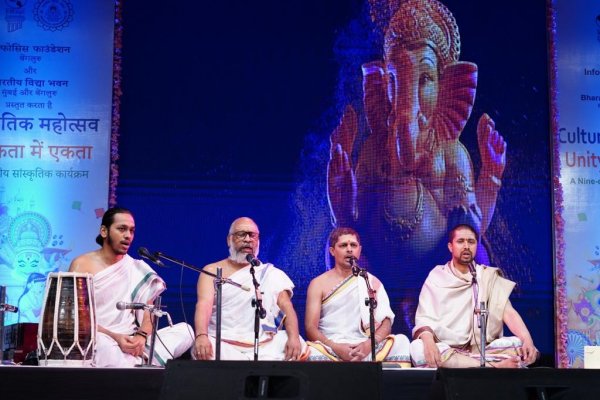 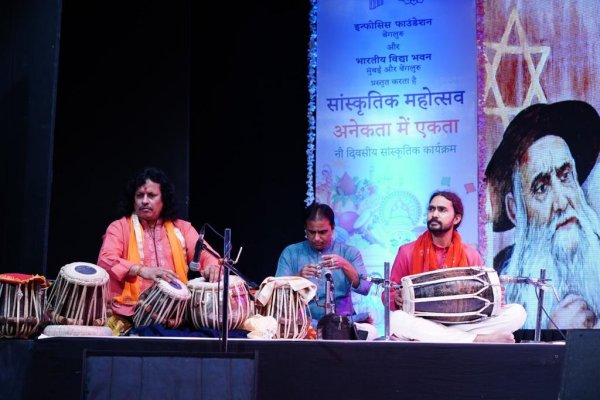 The musical evening 'Sumiran Kar Le Re Manva' was based on devotional songs from various religions. The program opened with Vedic Mantras recited in the Vedic Swaras - Udatta, Anudatta, Swarita, with authentic intonations, by Dr. Ganapati Hegde and his group. This gave an ideal start to this evening that went ahead with Zoroastrian Munajat, the Parsi prayers sung by Jamshed Kotwal in Gujarati. Johny Shah presented the Jain Stavan and the Buddhist chants, with excellent touches of raga Bairagi on the sonorous sarangi and flute. He also sang the Bhajan "Ram kaho Rahman kaho...sakal Brahma swayamev hi" composed in raga Pilu before Ramkrishna Das joined him with "Buddham Sharanam Gachchhami". 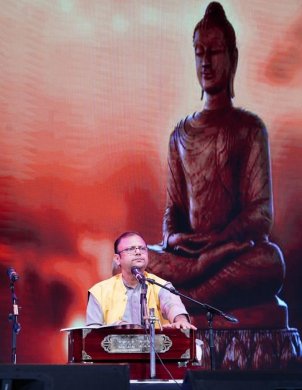 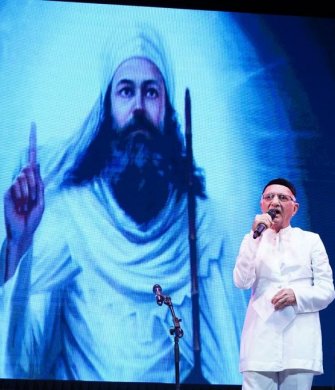 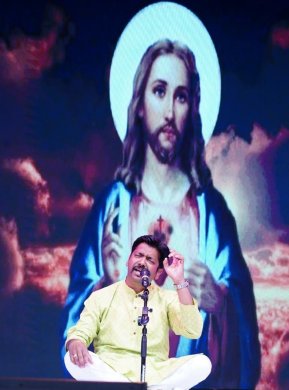 Vijay Avale presented Christian songs. Since the vocalist belonged to Narayan Vaman Tilak Parampara, the language of the songs was Marathi, based on ragas like Ahir Bhairav and Charukesi. The Pushti Margiya Haveli Sangeet next, was presented by Pt. Sukhdev Chaturvedi in Dhamar and Chautal starting with Mangal Arti in raga Bilawal with a Vallabhacharya Pada. This was followed by "Lal Gopal Gulal hamari ankhin mein jin daro ji..." in Brij Basant. He also sang a Hori Dhamar in raga Kafi. Harpreet Singh presented Gurubani, Ramkrishna Das sang Bhajans of Chaitanya Mahaprabhu. The evening concluded with Islam prayers like Quran-e-Pak Naat and Man-Qabat presented by Fareed Hasan and Mehboob Hussain. The Festival's theme 'Unity in Diversity' was underlined with Indian classical dances on the seventh evening of the nine day festival. The dancers practicing different Indian classical dance forms were selected by Sunayana Hazarilal, who heads the Kathak dance department at the Sangeet Nritya Shiksha Peeth of the Bharatiya Vidya Bhavan, Mumbai. Sunayana Hazarilal had suggested my name to Bharatiya Vidya Bhavan for hosting the show. As a compere for the whole evening, the responsibility included introducing the dance form, the dancers, and the items they were presenting. 'Unity in Diversity' is the beauty and strength of Indian culture. The rich heritage of Indian classical dances of India representing different parts of our country is the best example of this notion. If Bharatanatyam is a sophisticated dance form from the Southern parts of India, Kuchipudi is from the Andhra region, and Odissi is inspired by the temple sculptures of Orissa. Manipuri and Sattriya come from North-East, Kathakali and Mohiniyattam are from Kerala, and Kathak comes from the Northern parts of our country. They all have the feel and fragrance of their specific regions. The language, costumes and jewellery, makeup, musical forms, and instruments all have diverse flavours. They however grow out of that regional identity and unite in the broader perspective of Indian philosophy and spirituality. This unity in Indian classical dances is also because they all follow the techniques codified in the Natyashastra of Bharatamuni. This binds them all in one thread despite the regional diversity which is allowed by the author of Natyashastra. This unity is also marked by the tandav and lasya aspects of Indian dance representing the energetic masculine movements of Nataraja Shiva, and the feminine grace of Parvati respectively. This combination lends strength and vigour to our dance forms on one hand and grace and subtlety on the other. Every classical dance form of India embodies these two aspects, if not clearly demarcated; then merging into each other as the male and female nature of humankind. 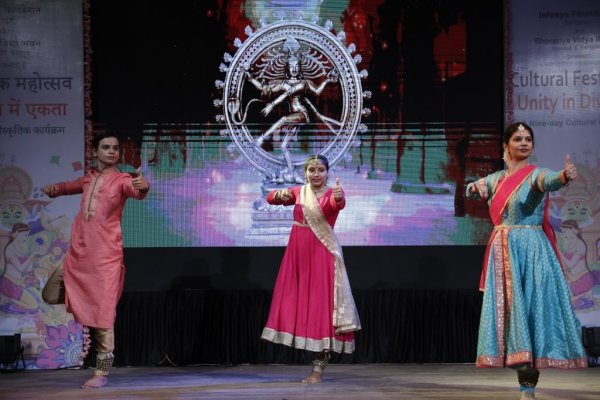 Kathak by students of Guru Sunayana Hazarilal After the introductory preface of Indian classical dances in general, the evening performances opened with Kathak by the students of Guru Sunayana Hazarilal, who belongs to the Janaki Prasad lineage of Benaras Gharana. The invocatory Shiva-Stuti "Ang bhujang rachitang..." written and composed by Pt. Jagaddhar Bhatt, the poet-musician from the royal court of Maharaja of Kashmir was presented with bhakti bhava by her students Shahbaz Shaikh, Bhavana David, Aditi Yadav and Kruti Singh. They followed it with a Tarana in Brindavani Sarang set to teentala, underlining the nritta aspect of Kathak with Tode, Tukde, Kavitta, Chakradaar Tihai, Gat Nikas, and crisp footwork. The second presentation was the Manipuri dance by Latasana Devi, the senior disciple of Guru Bipin Singh, Kalawati Devi, and Darshana Jhaveri. A Nartan Alankar and Nartan Acharya from Manipuri Nartanalaya, Latasana Devi is also trained in Pung Cholam and Kartal Cholam and Nata Sankeertan. Opening her performance with an invocation to Shiva on Rudrashtakam and a prayer written and composed by herself; she followed it with Radha Roop Varnan choreographed by Guru Bipin Singh. The audience could easily make out the contrast between the two dance forms comparing the previous Shiva-Stuti in Kathak and this one with the lyrical grace of the Manipuri dance. Odissi by Swapnokalpa Dasgupta was the next dance form with its sculpturesque poses and distinctive features like the chauka and tribhanga. An earnest Odissi dancer, teacher, arts manager, and curator, Swapnokalpa is head of dance programming at the NCPA in Mumbai. An M.A. in Arts and Heritage Management from the London Metropolitan University, UK, Swapnokalpa is trained in Odissi under Gurus Kelucharan Mohapatra, Ratikant and Sujata Mohapatra. Swapnokalpa presented the classic choreography of Guru Kelucharan Mohapatra on the immortal verses of Jayadeva's Dashavatara, the ten incarnations of Vishnu from Geeta Govinda that also reflect the stages of human evolution: Matsya-the aquatic fish, Kurma - the amphibian turtle, Varaha - the mammal boar, Narahari - the half man half animal (lion), Vaman - the dwarf, Ram - the pious king, Balaram who represents cultivation, Buddha - the ultimate spiritual consciousness and finally Kalki - the avatar that will lead to destruction and pave the path for regeneration. The vocal rendering by Debashish Sarkar sounded a little different from the original music by Pt. Bhubaneshwar Mishra one is used to, but Swapnokalpa got a loud round of applause. 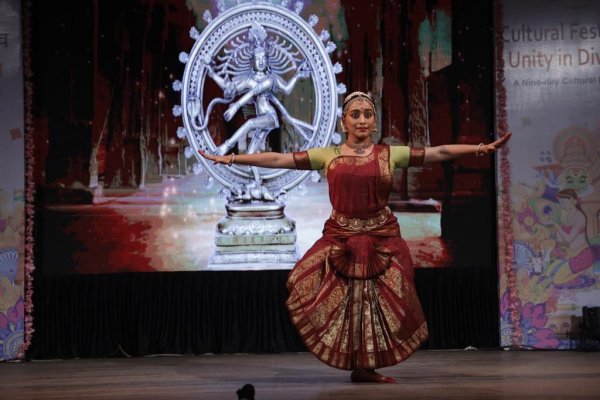 Bharatanatyam by Snigdha Menon Bharatanatyam by Snigdha Menon, a graceful dancer who has been training under Guru Gayatri Subramaniam at the Guru Ramani Natya Kala Foundation for more than 20 years, was next. A graded artist of Doordarshan, Snigdha is currently pursuing her masters in Fine Arts from Sastra University, Thanjavur. With sound training in Yoga, Snigdha understands the nuances of the human body and is able to use that to her advantage in her natyam, which was proved beyond measure when she performed 'Thaye Tripura Sundari' in ragam Shuddha Saveri set to khanda chapu talam composed by Periyasaami Thooran. It is believed that Periyasaami Thooran was extremely ill and he prayed to Tripura Sundari of Thiruvanmiyur temple. He wrote and composed this piece in praise of Tripura Sundari after he got cured. The song also conveys the message that all your ailments will cease to exist when you surrender yourself to Tripura Sundari, the consort of Shiva and protector of the universe. 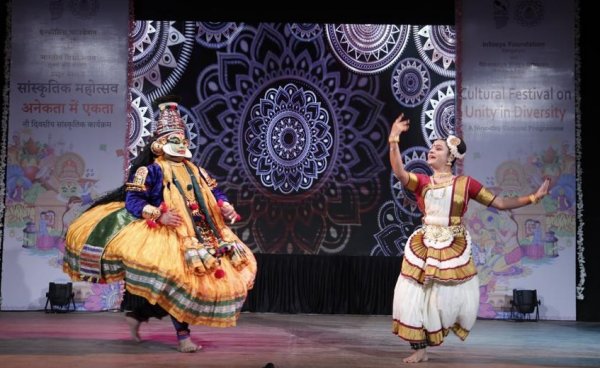 Renjish and Deepa Nair The evening concluded with Kathakali and Mohiniyattam dance forms from Kerala presented by Renjish and Deepa Nair respectively. Renjish Nair is the disciple of Guru Kalamandalam C. Gopalakrishnan, who has done basic and advanced training and research in Kathakali at the Kalakshetram, Mumbai. Renjish is also an acclaimed chenda player, trained in Carnatic music. Renjish Nair opened his Kathakali performance with an excerpt from 'Rukmini Swayamvaram' written by Aswathi Thirunal. The story was about Rukmini, the beautiful daughter of the Vidarbha King Bhishmaka who wanted to marry Krishna, but her brother Rukmi insisted that she should marry Shishupala. The excerpt started when a Brahmana, their family friend arrives at Dwaraka and is welcomed by Krishna who says "O Brahmana, I bow down at your feet because as a king my 'dharma' is to safeguard the well-being of people, especially the Brahmans. You can express your wish without hesitation, and it will be fulfilled!" The larger-than-life-size divine characters of Krishna and the Brahmin both were performed by Renjish with aplomb. The second piece was choreographed and performed by him as a duet of Kathakali and Mohiniyattam with Deepa Nair. The duet opened with Jayadeva's Ashtapadi from Geeta Govinda "Haririha mugdhvadhu nikare...." as a sequence of Pandattam, a special item of Mohiniyattam on the play of the ball, played between Gopi and Krishna. This was followed by "Chandana charchita neela kalebara peeta vasana vanamali" reaching the Indian classical dance evening to its climax. The mesmerizing show not only underscored the concept of 'Unity in Diversity' but also offered rasikas the cherished 'rasaaswadana', the savouring of aesthetic delight. 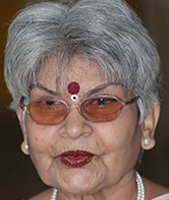 Manjari Sinha has an M.A. in Sanskrit and Music, and trained in vocal, tabla, sitar and Kathak dance. She has regular columns in national dailies as a music and dance critic. |